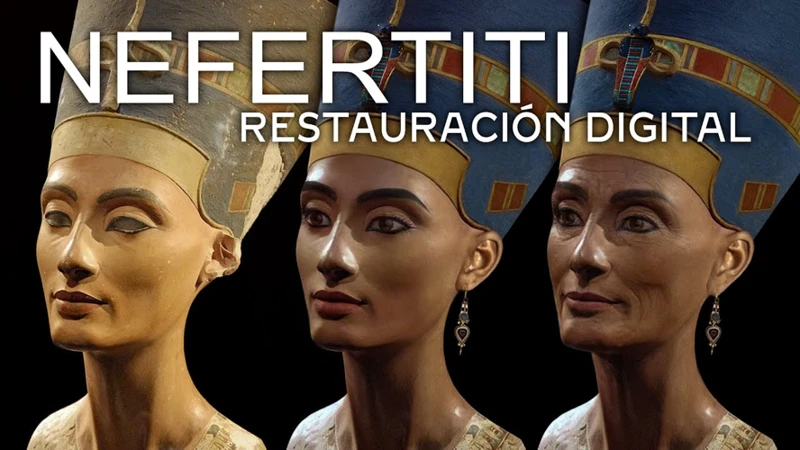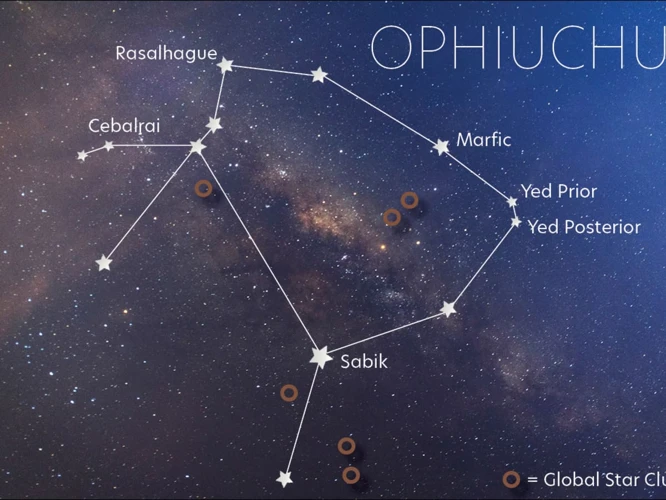Nefertiti: The Iconic Queen of Ancient Egypt
Step back in time to the majestic world of ancient Egypt, where a remarkable woman captured the hearts and minds of her people. Nefertiti, often referred to as the “Iconic Queen,” was a symbol of power, beauty, and intellect during her reign in the 14th century BCE. Her unparalleled influence, enigmatic disappearance, and lasting legacy continue to intrigue historians and archaeologists. Join us as we uncover the captivating life of Nefertiti, exploring her early life, rise to power, reign, beauty secrets, and the mysteries surrounding her disappearance and death. Let us delve into the mesmerizing world of this iconic queen and unravel the secrets of her legendary aura.
Contents
- Early Life and Rise to Power
- The Reign of Nefertiti
- The Iconic Beauty of Nefertiti
- Nefertiti’s Disappearance and Death
- Legacy and Influence
- Conclusion
- Frequently Asked Questions
- References
-
Frequently Asked Questions
- FAQs About Nefertiti: The Iconic Queen of Ancient Egypt
- Who was Nefertiti?
- What does the name “Nefertiti” mean?
- What was Nefertiti’s role in ancient Egypt?
- What were Nefertiti’s beauty secrets?
- How was Nefertiti portrayed in Egyptian art?
- What is the famous “Bust of Nefertiti”?
- Why is Nefertiti remembered as an iconic queen?
- What happened to Nefertiti after her husband’s death?
- What is Nefertiti’s legacy?
- Are there any movies or books about Nefertiti?
- References
- Read More
Early Life and Rise to Power

Nefertiti’s early life remains shrouded in mystery, with limited historical records to provide concrete details. It is believed that she was born around 1370 BCE and was the daughter of a high-ranking noble named Ay. Little is known about her childhood and upbringing, but it is speculated that she received a privileged education, befitting her noble status. Nefertiti’s path to power began when she married the pharaoh Akhenaten, who ascended to the throne around 1353 BCE. This marriage solidified her position as queen consort and marked the start of her remarkable rise to power. Akhenaten’s reign brought significant changes to ancient Egyptian religion and politics, with a shift towards the worship of Aten, the sun disk. As queen, Nefertiti played an active and influential role in promoting this new religious ideology, even being depicted alongside Akhenaten in religious scenes and ceremonies. Her association with the pharaoh’s revolutionary religious reforms earned her immense political power and cemented her status as a prominent figure in ancient Egypt. Nefertiti’s rise to power not only showcased her intelligence and strategic acumen but also foreshadowed the significant impact she would have during her reign as queen.
The Reign of Nefertiti

During her reign, Nefertiti exhibited immense power and influence, leaving a lasting impact on ancient Egypt. As queen, she actively participated in the religious and political affairs of the kingdom, alongside her husband, Pharaoh Akhenaten. Together, they continued to promote the worship of Aten, the sun disk, and established a new capital city known as Amarna. Nefertiti played a pivotal role in the religious ceremonies and rituals associated with the worship of Aten, often depicted alongside Akhenaten in temple reliefs and sculptures. Additionally, she served as a key advisor to the pharaoh, shaping policies and decisions that affected the kingdom. Nefertiti’s reign also saw advancements in art and culture, with a distinct Amarna artistic style emerging during this period. She fostered an environment of innovation and creativity, further elevating her status as an influential queen. Known for her beauty and intelligence, Nefertiti’s reign left an indelible mark on ancient Egypt’s history and culture. Link: /planetary-alignments-evolution-astrological-beliefs/
Religious and Political Influence
Nefertiti’s religious and political influence during her reign as queen of ancient Egypt was unparalleled. As the wife of the pharaoh Akhenaten, who introduced the revolutionary religious reforms centered around the worship of Aten, Nefertiti played a crucial role in promoting and implementing these changes. She actively participated in religious ceremonies and was depicted alongside Akhenaten in artwork and inscriptions, highlighting her elevated status and close association with the new religious order. Nefertiti’s devotion to the Aten cult was evident in her adoption of the name Neferneferuaten, which translates to “Beautiful are the Beauties of Aten.” This further emphasized her commitment to the religious shift and solidified her significance within the religious landscape of ancient Egypt. In addition to her religious influence, Nefertiti also wielded considerable political power. She was involved in matters of state and often appeared alongside Akhenaten in royal decrees and administrative documents. Some even speculate that she may have served as co-regent with Akhenaten during certain periods of their reign. Nefertiti’s status as a powerful and influential queen is evident in ancient artworks that depict her wearing the royal regalia typically reserved for pharaohs. Her role in religious and political affairs demonstrates her intelligence, charisma, and ability to navigate the complexities of ancient Egyptian society. Nefertiti’s religious and political influence not only shaped the course of Egypt’s history but also solidified her legacy as one of the most iconic queens of ancient times.
The Iconic Beauty of Nefertiti
![]()
Nefertiti’s beauty is legendary, captivating both her contemporaries and modern admirers alike. Her name itself means “the beautiful one has come,” a testament to her exquisite appearance. The iconic bust of Nefertiti, discovered in 1912, serves as a testament to her timeless allure. This meticulously crafted sculpture showcases her high cheekbones, graceful eyes, and delicate features, capturing the essence of her captivating beauty. Nefertiti’s appearance went beyond physical attractiveness; she used her beauty as a tool of power and influence, captivating all who beheld her. While her exact beauty secrets remain a mystery, it is believed that she took great care of her skin and hair, utilizing natural ingredients such as oils and perfumes. Her beauty was not just a superficial aspect of her reign; it symbolized her divine connection and radiated authority. Nefertiti’s beauty continues to inspire and fascinate, immortalized in art and admired throughout the ages.
The Bust of Nefertiti
The Bust of Nefertiti has become an enduring symbol of beauty and grace from ancient Egypt. This exquisite sculpture, dating back to the 14th century BCE, was discovered in 1912 by German archaeologist Ludwig Borchardt in the workshop of the sculptor Thutmose in Amarna. The bust portrays Nefertiti with remarkable elegance and precision, showcasing her regal features, including high cheekbones, a slender neck, and a perfectly symmetrical face. The craftsmanship and attention to detail in the bust are astounding, with finely sculpted eyelashes, delicately arched eyebrows, and a serene expression that radiates an aura of power and allure. The statue is made of limestone and meticulously painted with vibrant colors. The Bust of Nefertiti serves as a remarkable testament to the artistic skill and aesthetic sensibilities of ancient Egypt. It has since gained global recognition as an iconic piece of art and is currently housed at the Neues Museum in Berlin, Germany. This invaluable artifact offers a glimpse into the timeless beauty and cultural significance of Queen Nefertiti, capturing her timeless appeal and immortality.
Beauty Secrets of the Queen
Nefertiti, renowned for her exquisite beauty, has long captivated historians and beauty enthusiasts alike. Her secrets to maintaining her iconic radiance have been a subject of fascination. One of the most notable beauty secrets attributed to Nefertiti is her renowned skincare routine. Historical accounts suggest that she utilized natural ingredients such as honey, milk, and essential oils to keep her skin flawless and youthful. Milk baths, in particular, were believed to be a staple of her beauty regimen, known for their moisturizing and rejuvenating properties. Nefertiti also paid great attention to her eye makeup, using black kohl to line her eyes and create a striking, almond-shaped look. The application of kohl was not only for cosmetic enhancement but also held religious and spiritual significance in ancient Egyptian culture. Additionally, she adorned herself with intricately designed jewelry and elaborate headdresses, further enhancing her regal appearance. While the exact details of Nefertiti’s beauty secrets may remain unknown, her enduring image as a timeless beauty continues to inspire and captivate to this day. As we explore the allure of ancient Egypt, it becomes apparent that Nefertiti’s fascination with beauty went beyond superficial aesthetics; it was an integral part of her role as queen, serving as a symbol of her power and influence.
Nefertiti’s Disappearance and Death

The disappearance and death of Nefertiti remain a subject of debate and speculation among historians. After approximately twelve years of reigning alongside Akhenaten, Nefertiti suddenly vanished from historical records, leaving behind a trail of unanswered questions. Some theories suggest that she may have died, while others propose that she adopted a new identity or continued to exert influence from behind the scenes. One prevailing theory posits that Nefertiti, in her later years, may have taken on the role of co-regent and ruled as the pharaoh Neferneferuaten. This theory is supported by evidence found in the Amarna Letters, a collection of diplomatic correspondence from that period. However, the uncertainty surrounding her fate persists. The exact date and circumstances of Nefertiti’s death, assuming she did indeed pass away, have eluded historians. Some speculate that she may have died of natural causes, while others suggest foul play or political intrigue. The enigma of Nefertiti’s disappearance and death adds to the air of mystery surrounding this iconic queen, leaving us to wonder about the full extent of her legacy and influence.
Legacy and Influence

Nefertiti’s legacy and influence are undeniable, leaving a lasting impact on ancient Egyptian history and beyond. As the “Iconic Queen,” she not only shaped the religious and political landscape of her time but also became a symbol of female power and beauty throughout the ages. Nefertiti’s artistic portrayal revolutionized the concept of royal beauty, with her elegantly elongated neck, delicate features, and captivating gaze. The iconic Bust of Nefertiti, discovered in 1912, stands as a testament to her timeless allure and is regarded as one of the most celebrated works of ancient art. Additionally, Nefertiti’s religious and political influence alongside her husband, Akhenaten, resulted in significant changes in Egyptian society. The worship of Aten, the sun god, and the promotion of monotheism left a profound impact on religious practices and beliefs. Nefertiti’s influence extended beyond her lifetime, as her successors sought to emulate her grace and power. Her reign and image continue to inspire modern art, literature, and even fashion. Nefertiti’s legacy is a testament to her indelible mark on history and her enduring place as one of Egypt’s most iconic and influential queens.
Conclusion

In conclusion, Nefertiti stands as an iconic figure in ancient Egyptian history, known for her beauty, intelligence, and influential role as queen. Her early life and rise to power remain somewhat mysterious, but her marriage to Pharaoh Akhenaten solidified her position as queen consort and allowed her to wield significant political and religious influence. Throughout her reign, Nefertiti played a key role in promoting and propagating Akhenaten’s revolutionary religious reforms, solidifying her position as a prominent figure in ancient Egypt. The enigmatic beauty of Nefertiti continues to captivate the world, with the famous Bust of Nefertiti serving as a lasting testament to her allure. Despite her disappearance from historical records, her legacy and influence endure, inspiring countless individuals to delve into the rich history of ancient Egypt. Nefertiti’s story serves as a reminder of the remarkable individuals who shaped the course of history and continue to fascinate us to this day.
[Continue reading about fascinating careers in astrology and how to pursue them](/astro-career-choices/)
Frequently Asked Questions

FAQs about Nefertiti: The Iconic Queen of Ancient Egypt
1. What are some significant achievements of Nefertiti during her reign?
Nefertiti’s reign marked a period of cultural and religious revolution in ancient Egypt. She played an instrumental role in promoting the worship of Aten, the sun disk, alongside her husband, pharaoh Akhenaten. Nefertiti’s influence extended beyond religious matters, as she actively participated in state affairs, communicated with foreign leaders, and enhanced diplomatic relations.
2. Was Nefertiti the mother of King Tutankhamun?
While there is ongoing speculation, the parentage of King Tutankhamun remains uncertain. Nefertiti is believed to have been his stepmother, as she was married to his father Akhenaten. Some theories propose other candidates as his mother, such as Kiya or a lesser-known wife of Akhenaten.
3. What is the significance of Nefertiti’s famous bust?
The bust of Nefertiti is an iconic masterpiece of ancient Egyptian art. It was discovered in 1912 and is now displayed in the Neues Museum in Berlin, Germany. The bust showcases Nefertiti’s renowned beauty, with finely sculpted facial features and an elegant headdress, serving as a symbol of her timeless allure and impact on art and culture.
4. How did Nefertiti influence the aesthetics of ancient Egyptian art?
Nefertiti’s reign brought about a distinctive artistic shift, characterized by more naturalistic and expressive depictions of both herself and her husband Akhenaten. This period, known as the Amarna Period, saw a departure from the traditional art styles of ancient Egypt, with a greater emphasis on realism, portraying the royal family in a humanistic manner.
5. Why is Nefertiti often described as an iconic beauty?
Nefertiti’s depictions in art and the famous bust emphasize her striking features, such as her high cheekbones, elongated neck, and full lips. These representations and her renowned beauty have contributed to her enduring legacy as an iconic symbol of feminine elegance and grace.
6. Did Nefertiti rule as pharaoh after the death of Akhenaten?
There is no definitive evidence that Nefertiti ruled as pharaoh after the death of Akhenaten. It is likely that her stepson, Tutankhamun, ascended to the throne, possibly with the assistance of Ay, who later became pharaoh. The exact fate of Nefertiti following Akhenaten’s death remains a mystery.
7. Were there any notable trade or diplomatic relations during Nefertiti’s reign?
Nefertiti is known to have engaged in diplomatic correspondence with foreign rulers, including the Mitanni kingdom. These exchanges of letters showcased her diplomatic skills and the international stature of ancient Egypt at the time.
8. What were some of the beauty secrets of Nefertiti?
Nefertiti was renowned for her beauty, and it is believed she used various cosmetic preparations to enhance her appearance. Some popular beauty regimens of the time included the use of perfumed oils, kohl eyeliner, henna dye, and scented baths. These rituals were not only considered cosmetic but also had religious and symbolic significance.
9. Why is Nefertiti’s disappearance and death still a topic of debate?
After a certain point in her reign, Nefertiti vanishes from historical records, and her fate remains unknown. Some theories suggest that she passed away, while others hypothesize that she underwent a name change and continued her rule under a different identity. The absence of conclusive evidence contributes to ongoing speculation and debate.
10. How does Nefertiti’s legacy continue to influence modern culture?
Nefertiti’s allure and role as a powerful queen have captivated people for centuries. Her cultural impact is seen in various forms, such as the enduring fascination with ancient Egypt, the influence of her beauty standards on contemporary aesthetics, and her iconic status as a symbol of female empowerment and grace.
References
- Nefertiti – Beautiful and Powerful Queen of Ancient Egypt
- Nefertiti – Queen, Bust & Husband Akhenaten
Frequently Asked Questions

FAQs About Nefertiti: The Iconic Queen of Ancient Egypt
Here are some frequently asked questions about Nefertiti, the iconic queen of ancient Egypt:
Who was Nefertiti?
Nefertiti was an influential queen of ancient Egypt during the 14th century BC. She was the wife and chief consort of Pharaoh Akhenaten, known for her beauty and power.
What does the name “Nefertiti” mean?
The name “Nefertiti” means “the beautiful one has come” in the ancient Egyptian language. It perfectly captures the queen’s renowned beauty.
What was Nefertiti’s role in ancient Egypt?
Nefertiti held a significant position and exercised political influence as the queen of Egypt. She actively supported her husband’s religious reforms and played a crucial role in promoting the worship of the sun god, Aten.
What were Nefertiti’s beauty secrets?
Nefertiti was renowned for her beauty, and it is believed that she took great care of her appearance. Some speculated beauty secrets include using natural ingredients like honey and milk for skincare, as well as maintaining a healthy diet and exercise regime.
How was Nefertiti portrayed in Egyptian art?
Nefertiti was frequently depicted in Egyptian art with an idealized and regal beauty. She was often shown with an elongated neck, almond-shaped eyes, a symmetrical face, and a slender body, reflecting the artistic aesthetics of the time.
What is the famous “Bust of Nefertiti”?
The “Bust of Nefertiti” is a renowned sculpture created by the ancient Egyptians, discovered in 1912. It is considered one of the most iconic and beautiful representations of Nefertiti, showcasing her striking features and regal elegance.
Why is Nefertiti remembered as an iconic queen?
Nefertiti’s reign left a lasting impact on ancient Egypt. She played a significant role in shaping religious and political policies, and her influence extended beyond her time. Her iconic beauty and the famous bust have made her a symbol of feminine grace and power.
What happened to Nefertiti after her husband’s death?
After the death of her husband, Pharaoh Akhenaten, Nefertiti’s fate remains uncertain. Some theories suggest she became co-ruler with her son, Tutankhamun, while others propose she took on a different identity or disappeared from historical records.
What is Nefertiti’s legacy?
Nefertiti’s reign marked a significant time of religious transition in ancient Egypt. Her influence on art, religion, and politics during her time as queen continues to captivate the imagination of people around the world, making her a legendary figure in history.
Are there any movies or books about Nefertiti?
Yes, Nefertiti has been the subject of various movies, books, and documentaries. Some popular works include the historical novel “Nefertiti” by Michelle Moran and the documentary “Nefertiti: The Mummy Returns” by BBC.
References
- Nefertiti – Beautiful and Powerful Queen of Ancient Egypt
- Nefertiti: Egyptian Wife, Mother, Queen and Icon – ARCE







